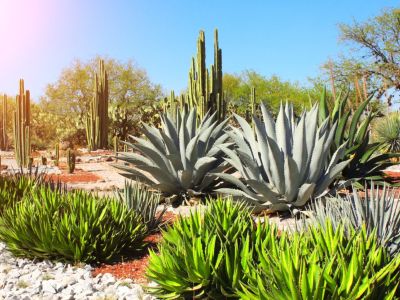What are Xerophytes?
Plant classifications such as mesophyte, hydrophyte or xerophytes hint at the species ability to adapt and survive. What are xerophytes? These are a group of plants that are uniquely suited to areas with limited rainfall. Adaptations of xerophyte garden plants vary but may include lack of leaves, waxy skin, storage organs or stems, shallow spreading roots or even spines. Cacti are great models of the xerophytic class. Other types of xerophytic plants include succulents like aloe, euphorbia, some grasses and even some perennial bulbs. These plants have the ability to store water, close the stoma in the leaves to conserve moisture, reduce transpiration and wide root bases or deep taproots.
About Xerophyte Desert Plants
While hydrophytes hang out near water and mesophytes on land with plenty of organic matter and moisture, xerophytes live where annual rainfalls are measured in just a few inches. Xerophyte desert plants, such as cacti, possess adaptations that allow them to not only survive in arid zones, but to thrive. Their low moisture and nutrient needs, ability to withstand blazing sun and cool nights makes xerophytic garden design a low maintenance way of conserving resources in the landscape. Xerophyte desert plants are suitable for USDA plant hardiness zones 8 to 13. However, these amazingly adaptive plants can occasionally grow in lower zones with some protection from cold and excess moisture.
Xerophytic Garden Design
Xerophytic adaptations of plants make for hardy resource conserving garden choices. Even if you don’t live in a desert, many types of xerophytic plants can work in different garden situations. The area under the eaves, for instance, tends to receive less rainfall and will be sunny and hot on the south and west sides. Rocky or gravely hills with sunny exposure tend to be low on moisture and nutrients which run off in the rainy season. These suggestions are just a couple of the areas where xerophytic garden design could be fun and helpful in your landscape. Check the area for drainage and amend with generous amounts of sand or other gritty material, if necessary. Choose plants suited for your zone. Remember that these plants often have a deep taproot, so choose locations wisely as they can be difficult to move once established. Cool, rainy climates can also use xerophytes in the garden as potted patio plants. Move them indoors or to a sheltered area in winter.
